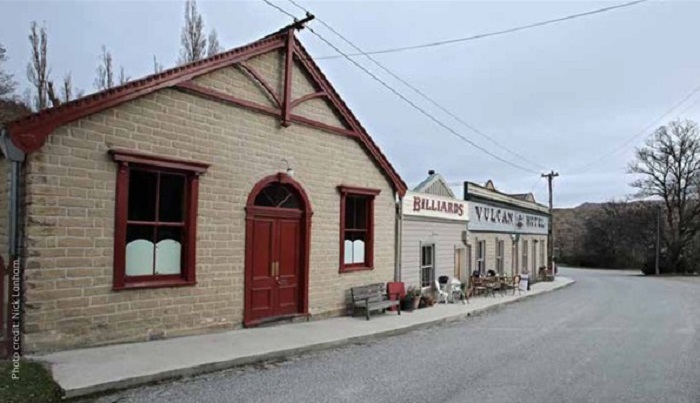Spotlight on design guidelines for Central’s historic precincts
Anna Robb
11 November 2022, 5:00 PM
 Clyde’s historic main street, where buildings are commonly built from locally sourced schist stone, timber or brick with corrugated iron roofs
Clyde’s historic main street, where buildings are commonly built from locally sourced schist stone, timber or brick with corrugated iron roofsLocals will soon be able to have their say on detailed heritage guidelines for five historic precincts; Clyde, Naseby, Old Cromwell town, Ophir, and St Bathans.
Central Otago District Council (CODC) approved a public notification of Plan Change 20 and consultation on the draft Heritage Guidelines in a meeting on Wednesday (November 9).
The change is based on the information contained in the draft Heritage Guidelines developed for CODC by Dr Glen Hazelton following an extensive review of the history and character of each of the five precincts.

Dr Glen Hazelton PHOTO: Heritage New Zealand
CODC principal policy planner Ann Rodgers said the guidelines were to “enable sympathetic development” and the focus was on “protection of the heritage precinct”.
She said council is trying to “create an enabling situation” for development within historic precincts.
“We’ve made sure there’s diagrams and the language is plain so that people can understand what is required of them,” she said.
Currently heritage impact assessments are required by CODC planners for developments in the precincts and these are often undertaken after design work is done.
“[The] new guidelines will give people an advanced indication of what might be acceptable or what they should be thinking about when they are designing buildings in the precincts.”

St Bathans features “gold rush era buildings” with simple materials like stone, cob, mudbrick, timber weatherboard and corrugated iron
Vincent Ward councillor Martin McPherson was supportive of the draft guidelines, saying they were “not overly prescriptive” and would “maintain the integrity of what’s there”.
Deputy mayor Neil Gillespie pointed out that Plan Change 20 was different to usual District Plan changes in that it will have immediate legal effect (because it involves rules in a proposed plan to protect historic heritage).
The guidelines do not have a formal statutory role but can be considered in the assessment of resource consents applications under the District Plan, and adapted easily if changes are needed.
The council report states: “The guidelines look to encourage high-quality, contemporary, but understated architecture that fits comfortably amongst these established communities. They welcome innovative, creative and individual design responses, recognising that each locality and site has specific characteristics.”
Plan Change 20 relates to minor changes in Section 11 (Heritage Precincts) of the District Plan, to better align matters of discretion and information requirements for resource consents required for building in a heritage precinct.
Find the draft guidelines here.



